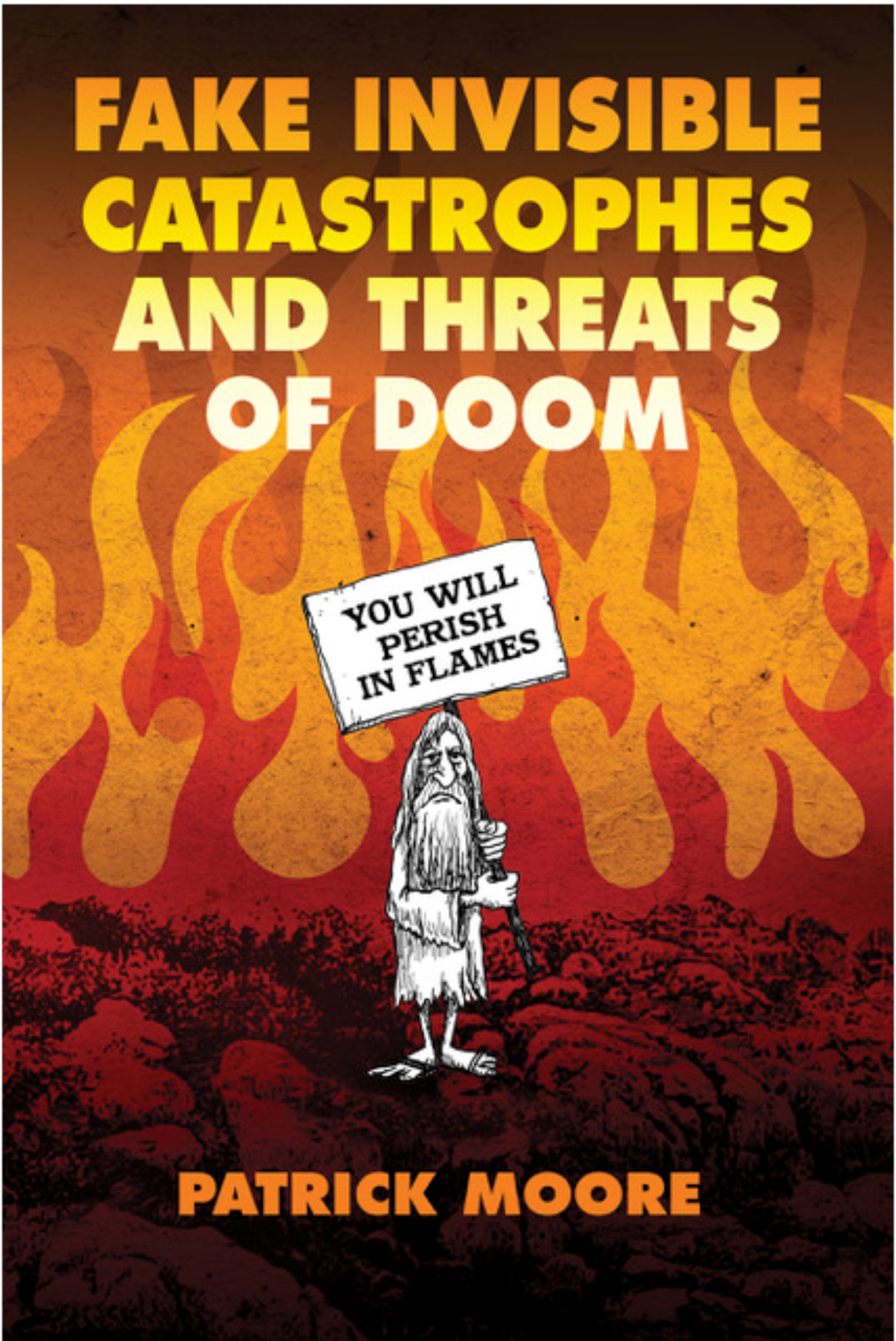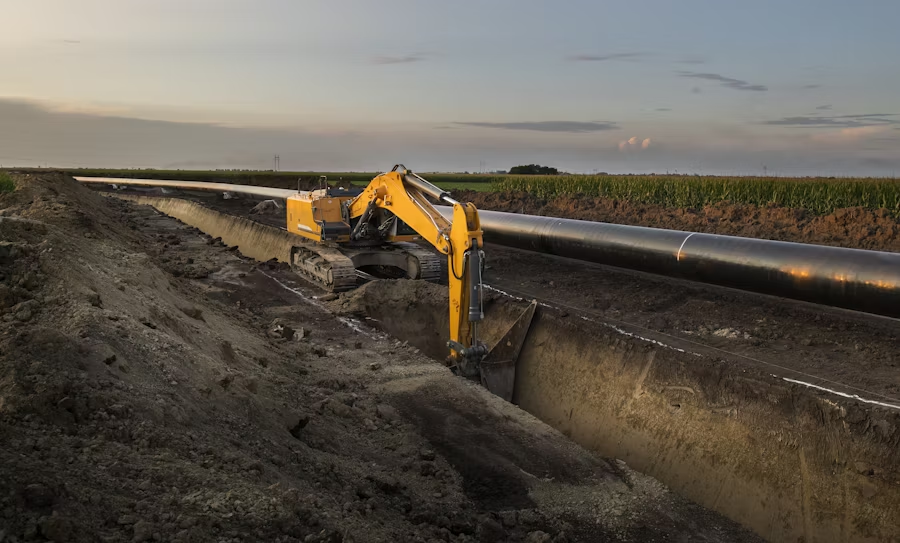In his new book Fake Invisible Catastrophes and Threats of Doom, Greenpeace co-founder Patrick Moore makes a remarkable point about current environmental concerns that is easy to overlook but, once stated, is both obvious and problematic: “the great majority of scare stories about the present and future state of the planet, and humanity as a whole, are based on subjects that are either invisible, like CO2 and radiation, or extremely remote, like polar bears and coral reefs. Thus, the vast majority of people have no way of observing and verifying for themselves the truth of these claims predicting these alleged catastrophes and devastating threats.” To be sure, as somebody once said, even paranoids have enemies, and some colourless, odorless and tasteless things can be deadly like, say, carbon monoxide. But it is curious the extent to which we are meant to take these things on faith. Especially as when somebody does go and check, the polar bears are still there and so are the coral reefs.

Whenever Moore’s name is mentioned people jump up and try to assassinate his character by saying he’s lying about being a founder of Greenpeace. But in fact it is Greenpeace that is lying; they acknowledged him as such on their website until 2007 at which point they dropped him down the memory hole but, alas, the Internet archives things. And this tendency to hit below the belt without hesitation brings up another point he emphasizes in the book: “When one studies these ‘narratives’ of invisible and remote circumstances, it is hard to avoid noticing that the purveyors often stoop to ridiculing and shaming, and likewise exhibit an unwillingness to discuss the allegations in a civilized manner. It is virtually impossible to engage in debate as they usually dismiss those who question their narrative as a skeptic, liar, denier, or of being in the pockets of ‘big oil.’ And if the alleged skeptic has employment, these narrators will work underhandedly to have you removed from your livelihood or position.”
It is not how one would like to see policy debates conducted. And while unfortunately it is by no means now confined to those skeptics who question orthodoxy on climate, it is especially common in that area. Despite which Moore forges ahead on a range of environmental topics by no means exclusively focused on climate though of course as he notes environmental issues nowadays tend to get linked somehow to global warming, as do a considerable number of issues not obviously related to environment like, say, the antibiotic-resistant fungus Candida auris.
One of the second-hand warming issues he addresses is coral reefs. Moore observes that in April 2016 headlines around the world screamed that the Great Barrier Reef was 93% dead, a number positively radiating sober scientific certainty. “But the careful reader would be hard pressed to find the origin of the number 93 percent as there is no record of it other than in headlines.” Remind you of anything? Right. The 97% “consensus”.
Moore also observes that the term “bleaching” conjures up images of industrially produced chlorine devastating marine life. (And the Greenpeace decision that precipitated his departure, to demonize the chlorine so often found in bleach, and we mean demonize quite literally as “the devil’s element”, and try to get it banished from the universe even though it is vital to life and also medicine plus it’s half of salt which some people notice is very common in that “salt water” thing oceans are known for.) But in fact the discoloration phenomenon in question has nothing to do with dumping manufactured chemicals into the ocean. Rather, it’s a question of the inherently colourless animal “polyps” in coral reefs temporarily ejecting their symbiotic phytoplankton, a sign of stress but by no means of morbidity.
The Great Barrier Reef eventually recovered and some news outlets admitted it. But as Moore says, most people are still convinced it is moribund. After all, it’s a long way away and most of us couldn’t afford to go there even if travel were permitted.
As noted, the book is not about climate change. But in addition to noting its supposed connection to everything from coral reefs to polar bears and trees, it does have one chapter specifically dedicated to it including a list of absurd supposed consequences including “Skinnier pigs” and also “Fatter horses”. Which sound like things you can see just by driving past a farm but, as Moore points out in keeping with his opening theme, most of them are not statements about things that have happened so you could go and see them. They are predictions about things that will or might and while we will all eventually visit the future, or some of it anyway, we can’t go take a look then come back and report. So they are indeed invisible and inaccessible.
There’s a great deal more in Moore’s book and we urge you to read it even if you normally take a contrary view. It’s very well written and well informed and, as John Stuart Mill rightly said over a century and a half ago now, as the Little Ice Age was winding down, “He who knows only his own side of the case knows little of that.” Especially because the orthodox view on climate is so different including in its view of evidence.
It is instructive to compare Moore’s perspective with this outburst from the New York Times’ “Climate Fwd.” year-end Dec. 30 2020 roundup: “This year was a tumultuous one on the climate front. It started with huge wildfires in Australia and ended with historic blazes in California. Over the course of the year, communities around the world were left reeling from extreme heat, record storms and rising seas. It was also something of a turning point: For many, it brought home the realization that the effects of climate change are not decades away. They are already here.”
Climate Fwd. does admit that at some point evidence is needed. And perhaps quietly worries that it’s been lacking. But when it stokes these various wildfires it says the thing that is not, because globally as in North America wildfires have been declining for decades not increasing. As for these “communities around the world… left reeling”, rather than being frightened by remote scare stories, where are they? Where, indeed, are these effects of climate change that “are already here”?
Not the threatened temperature increases. It is barely a degree warmer than during Victorian Times and without digital thermometers we would not have noticed. Hurricanes are not increasing worldwide. Wildfires are not increasing worldwide. Sea levels are not rising faster now than they were a century ago. Crops are not wilting. Deserts are not spreading.
Headlines are catching fire, to be sure. But, to give Moore the last word here, “in science, direct and tangible observation is fundamental. We must “observe” the situation with our senses of sight, smell, taste, hearing, and/or touch. Or, observations can be made using an instrument such as the microscope, telescope, Geiger counter, voltmeter, X-ray image, etc. Upon observing a new phenomenon, we must repeat the observation under the same conditions numerous times in order to ‘verify’ that it is a repeatable occurrence and not just a fluke. It is only then that we should make an announcement of our hypothesis and challenge other scientists to ‘replicate’ and test our results.”



A friend of mine believes in climate change, probably man-made, too. He showed me this video: https://youtu.be/R8ynabSmGGs
How do I respond to this? It claims that the permafrost in Canada is melting. I would like to respond, but I don't know how. Please help.
Mordecai: Nothing in this video speaks to the central issue of human contribution to climate change. It does not prove that driving SUVs causes the permafrost to melt. Nobody doubts that the Arctic is warming up; Siberia is experiencing the same thing. The fact is that the Arctic warms up and cools down, and warms up and cools down again. Climate change is the natural way of the world. Landscapes are in a constant state of flux, especially around water. The surprising thing would be if the Arctic stayed the same for decade after decade.
The permafrost has melted before. 5,000 years ago, trees grew at the Arctic circle. Nothing new here. The problem is that many people do not know of past historical events, so, for example, moving to a new area not knowing it is a flood plane will be a problem in those upcoming years when floods occur. We need a better method of educating people/children about historical events so they understand weather and climate and what kinds of changes can occur over time.
Moore gets so many things right. It is disappointing he completely screws up on some issues. Especially, nuclear power. Also, genetically modified organisms. We just cannot have either of those.
It is so hard to get right information about all these issues because there is no real source of truth. Almost everything is protecting some sort of interest, or somebody's propaganda campaign. As for climate Nexus, I am not sure if they fail to look into some things well enough or are not really on the level either.
There are real environmental issues, some very frightening. And some are fake.
"Moore gets so many things right. It is disappointing he completely screws up on some issues. Especially, nuclear power. "
Please see https://wattsupwiththat.com/2017/01/25/fear-of-nuclear/
Patrick was forced into an attempt to defend Monsanto by being blackballed by the climate Nazis, and so was obliged to find employment wherever he could, and in PR! Unfortunately, he ended up in the embarrassing situation of saying their weedkiller was safe to drink, then having to do a U-turn when a journalist asked him to prove that assertion by drinking some! Patrick is too honest to be in public relations, and should have stuck to science, where lying isn't allowed (sarc)...
Decaying organic material will produce its own heat even in a freezing environment. This is likely what is happening in some permafrost areas.
Thank you, Thylacine, for your answer.
The key word in Global warming is 'Global'. Your friend must provide proof that the permafrost melting is more than just a local temperature variation. The key evidence for global temperatures is satellite data and that shows no dramatic increase.
Simple, advise him that prior to freezing in the last ice age, it had been normal unfrozen land, as it was before the previous ice age, so it is part of the natural cycle of warming and cooling.